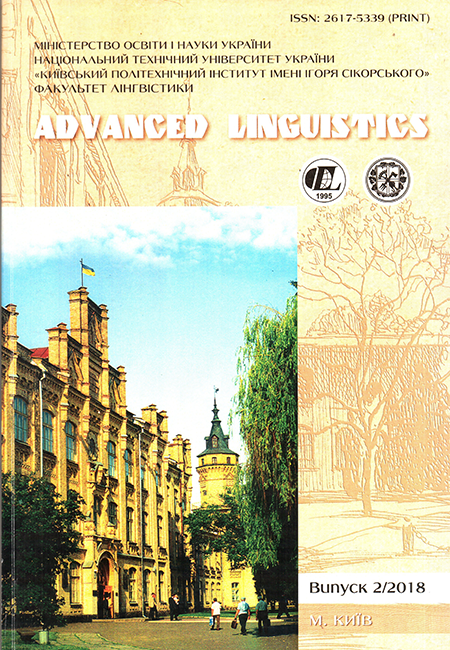KEY CONCEPTS OF CREATIVITY: FROM ANTIQUITY TO PRESENT
DOI:
https://doi.org/10.20535/2617-5339.2018.2.158382Ключові слова:
creativity, man, language, nature, art.Анотація
The problem of creativity has an interdisciplinary character. Psychologists, philosophers, culturologists, educators, sociologists, literary critics and linguists are engaged in the study of creativity. Different epochs have their distinctive theories on creativity. In antiquity creativity was considered as a special kind of being. Creativity was understood as a human desire for the reproduction of perfect patterns, as God-like art. Only God could create ex nihilo (“from nothing”). The artist was to reveal the laws of nature, follow and imitate them. However, the poet was free. In the Middle Ages, creativity was exclusively an attribute of God, people were considered not to be capable of it. In the Renaissance, understanding of creativity was twofold: sublime and mundane. In the New Age, creativity was seen as a fundamental prerequisite of consciousness and productive ability of imagination. Novelty determined creativity. Only in the nineteenth century, creativity became solely an attribute of man. In the twentieth century, creativity was possible in all spheres of human creation. In the twenty-first century the democratization of creativity is taking place. According to the hypothesis of the author of the article, creativity is an immanent sign of the universal cultural space. The genesis of scientific views on the essence of the concept of “creativity” is traced; evolutionary tendencies in the interpretation of the phenomenon of creativity are revealed; linguo-philosophical basis of creativity is found.##submission.downloads##
Номер
Розділ
Ліцензія
Наше видання використовує положення про авторські права CREATIVE COMMONS для журналів відкритого доступу.
Автори, які публікуються у цьому журналі, погоджуються з наступними умовами:
1. Автори залишають за собою право на авторство своєї роботи та передають журналу право першої публікації цієї роботи на умовах ліцензії Creative Commons Attribution License, котра дозволяє іншим особам вільно розповсюджувати опубліковану роботу з обов'язковим посиланням на авторів оригінальної роботи та першу публікацію роботи у цьому журналі.
2. Автори мають право укладати самостійні додаткові угоди щодо неексклюзивного розповсюдження роботи у тому вигляді, в якому вона була опублікована цим журналом (наприклад, розміщувати роботу в електронному сховищі установи або публікувати у складі монографії), за умови збереження посилання на першу публікацію роботи у цьому журналі.

